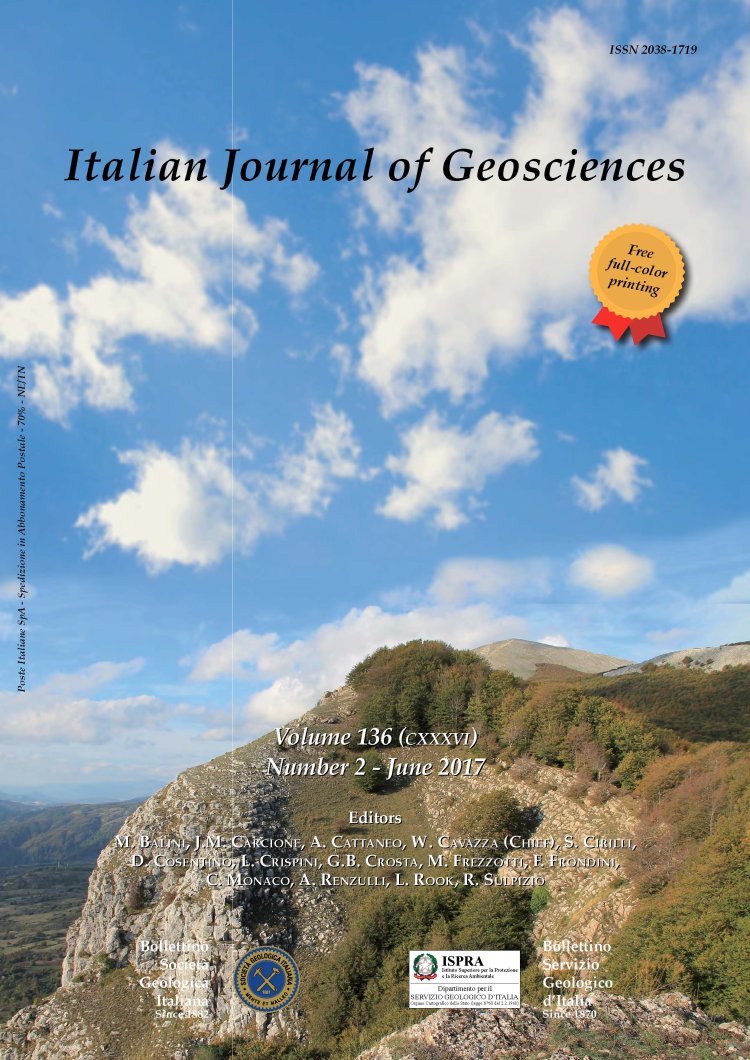
Cenozoic tectonic evolution of the northern Apulian carbonate platform (southern Italy)
Angela Vita Petrullo (1), Fabrizio Agosta (1), Giacomo Pross er (1) & Enzo Rizzo (2)
(1) Dipartimento di Scienze, Università degli Studi della Basilicata, Viale dell'Ateneo Lucano 10, 85100 Potenza, Italy. Corresponding author e-mail: angelav.petrullo@gmail.com.
(2) Istituto di Metodologie per l'Analisi Ambientale, CNR, C. da S. Loja, 85050 Tito Scalo (Pz), Italy.
Volume: 136 (2017) f.2
Pages: 296-311
Abstract
A 3D geological modeling of a large portion of the Apulian Platform buried underneath the Bradano Trough, southern Italy, is carried out by integrating 2D seismic reflection profiles, well log data, and published top Apula isobaths. The results of this work highlight the presence of five sets of high-angle, km-long faults, which displace the topmost units of the Apulian Platform. Both timing and kinematics of faulting are investigated by considering age, distribution, and thickness of the Cenozoic sedimentary terranes topping the Mesozoic Apulian carbonates.
The study area is characterized by a major fault scarp made up of NW-SE and NNW-SSE fault segments. This structural feature shows a Messinian-Early Pliocene transtensional kinematics, which might have occurred on pre-existing structural heterogeneities. On the contrary, on the basis of their abutting and crosscutting relationships with respect to the aforementioned fault zone, a Pliocene-Quaternary age is inferred for the N-S and NE-SW trending extensional faults, and an Early Pliocene age for the extensional NNE-SSW trending faults. These results are discussed in light of the complex tectonic evolution of the Central Mediterranean area, and may contribute to better assess the structural evolution of the fault network that dissects the northernmost portion of the Apulian Plate, at the boundary with the Adria Plate.
The study area is characterized by a major fault scarp made up of NW-SE and NNW-SSE fault segments. This structural feature shows a Messinian-Early Pliocene transtensional kinematics, which might have occurred on pre-existing structural heterogeneities. On the contrary, on the basis of their abutting and crosscutting relationships with respect to the aforementioned fault zone, a Pliocene-Quaternary age is inferred for the N-S and NE-SW trending extensional faults, and an Early Pliocene age for the extensional NNE-SSW trending faults. These results are discussed in light of the complex tectonic evolution of the Central Mediterranean area, and may contribute to better assess the structural evolution of the fault network that dissects the northernmost portion of the Apulian Plate, at the boundary with the Adria Plate.
Keywords
Get Full Text